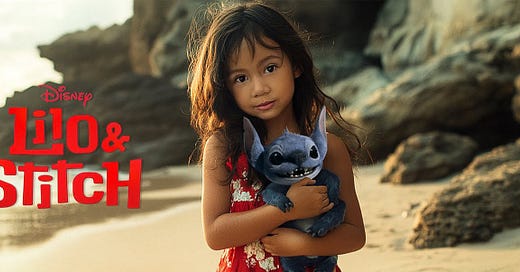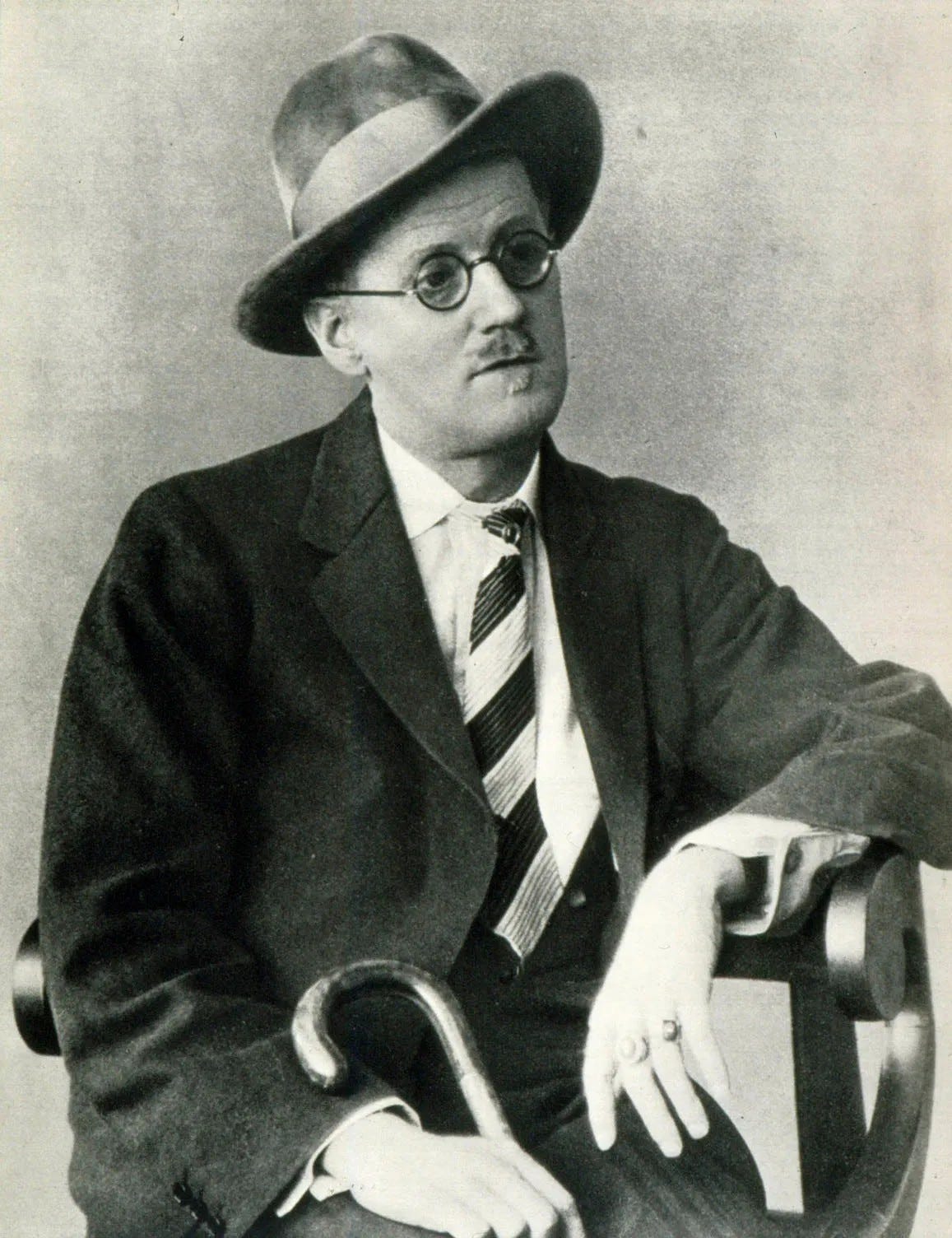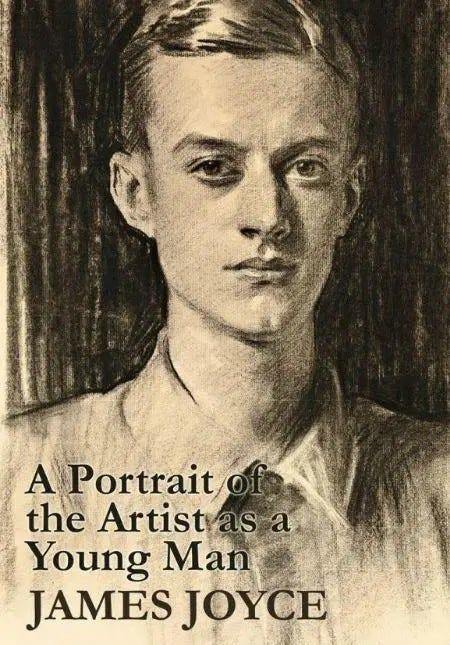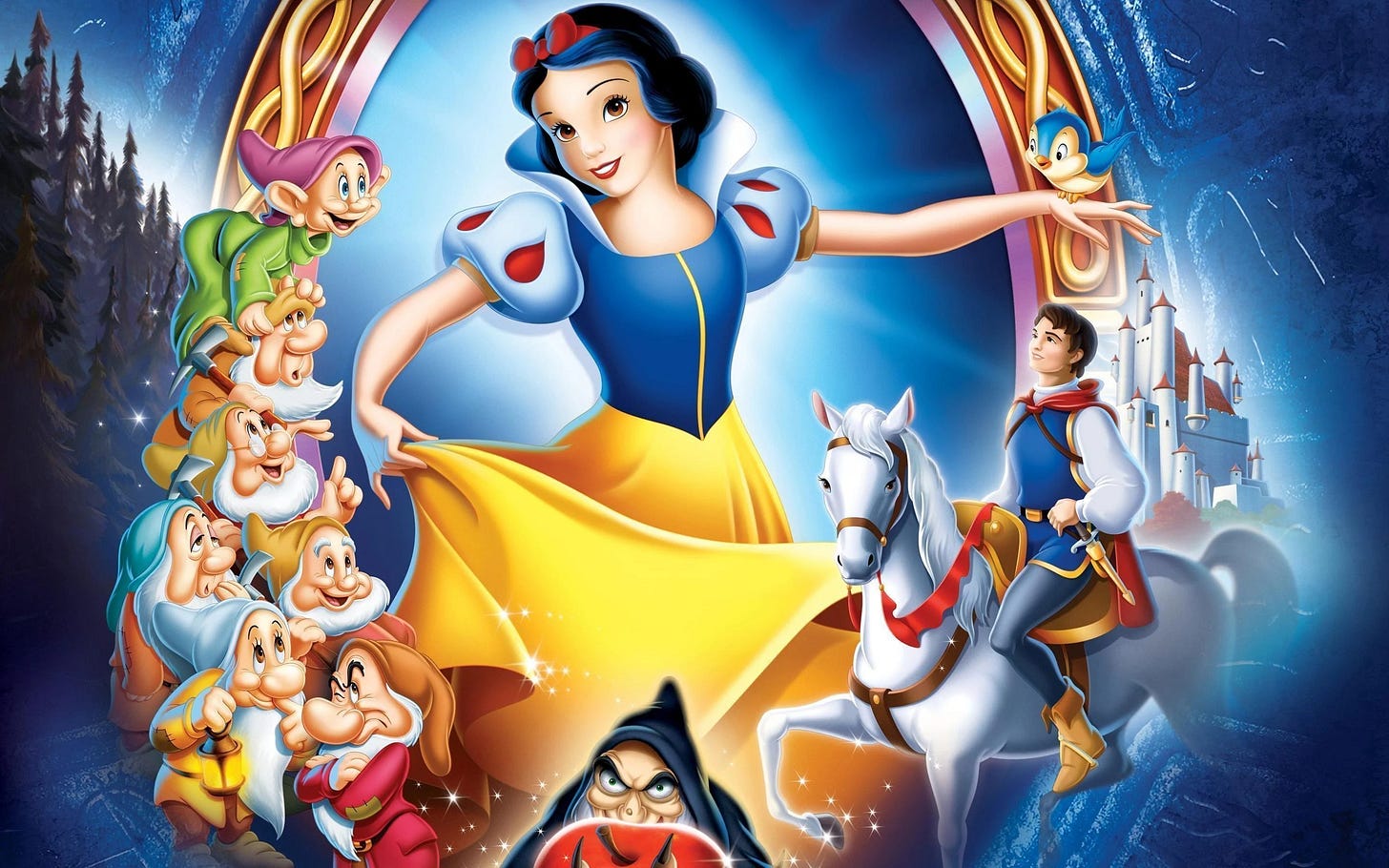Why Are Americans Funding Disney’s Attack on Family Values with Lilo & Stitch’s $170M Haul?
The Dangerous Power of Disney and the Terrible Damage of Unfaithful Woke Storytelling
“Mother is packing my new secondhand clothes. She prays now, she says, that I may learn in my own life and away from home and friends what the heart is and what it feels. Amen. So be it. Welcome, O life! I go to encounter for the millionth time the reality of experience and to forge in the smithy of my soul the uncreated conscious of my race.” - James Joyce, Portrait of the Artist as a Young Man
Do you ever feel like the evil in this country is winning?
Do you feel like at times the dark forces are gaining ground, growing stronger by the day?
That’s exactly how I felt this week watching the Disney hullabaloo over their live-action Lilo & Stitch remake.
All last week, I watched the media propaganda machine churn day after day, night after night, with this latest brainwashing endeavor.
Shows like Entertainment Tonight, Access Hollywood, Inside Edition, and others relentlessly dragged out that little girl, Maia Kealoha, the star playing Lilo, plastering her face across screens to sell this remake to the masses, touting it as a huge Disney success.
I was borh sickened and outraged.
And you should be as well.
I mean, seriously—why are Americans lining up to hand Disney $170 million globally in just a few days, with projections soaring toward $700–$800 million, maybe even a billion?
Disney has made it its mission to tear apart the fabric of the American family, pushing agendas that clash with everything we hold dear.
It makes no sense to me.
Has everyone all of a sudden forgotten how bad Disney and Hollywood really are?
If you’re a MAGA patriot, you should be slamming the door on Disney—boycotting every movie, every product, every piece of their $2.6 billion merchandise empire.
The success of Lilo & Stitch, with its $14.5 million in previews and $29.6 million opening Friday, isn’t just a box office win; it’s a gut punch to those of us fighting for traditional values.
Let's dive in deeper and see why Hollywood in general, and Disney more specifically, is so dangerous to our American way of life.
What truly shapes the values and beliefs of a culture and a society?
Why do artists, writers, and storytellers, who inspire the hearts and minds of new generations, wield so much power?
Throughout history, art and storytelling have been the forge in which the soul of a nation is shaped.
James Joyce understood this when he wrote, “I go to forge in the smithy of my soul the uncreated conscience of my race.”
Artists and writers have always wielded immense cultural power, influencing how people view themselves, their communities, and their morality.
But what happens when this power is misused?
What happens when this immense power is taken over by hostile, evil forces?
Today, corporations like Disney, Netflix, and others have taken on the role of cultural smiths, but instead of inspiring greatness or uplifting society, they’ve chosen to advance divisive ideologies that undermine traditional values.
These companies are not just creating entertainment—they’re reshaping America’s cultural conscience, and the consequences are dangerous.
James Joyce Understood the Power of the Storyteller
When I was in my late 30s, I discovered the works of James Joyce, and it changed the way I thought about literature and the power of language.
I started with A Portrait of the Artist as a Young Man, and from the very first pages, I was captivated by the sheer beauty of his prose—his ability to weave words into art.
Joyce didn’t just tell a story; he painted it, layered it, and challenged me to see beyond the surface.
The themes of identity, faith, rebellion, and artistic purpose resonated with me deeply, and I found myself lingering over passages, rereading them like poetry, savoring every word.
I soon moved on to Dubliners, where Joyce’s gift for capturing the shillouette of ordinary life struck me.
Each story felt like a window into the human soul, raw and unfiltered yet somehow profoundly elegant.
And then there was Ulysses, his towering masterpiece—a book that both challenged and rewarded me in equal measure.
It was unlike anything I had ever read, forcing me to think differently about storytelling, structure, and the very boundaries of what a novel could be.
I spent months reading it, but by the time I finished, I was completely infatuated with Joyce’s vision, his ability to dive deep into the human experience, and his unrelenting quest to “forge in the smithy of [his] soul the uncreated conscience of [his] race.”
Joyce didn’t just write; he inspired, and his work left a mark on me that continues to influence how I think about art, culture, and the role of the artist in shaping the world.
After my long sojourn through the mind and pages of Joyce, I was deeply, profoundly and forever changed.
Dissecting Joyce’s Astounding Revelation
In Portrait of the Artist as a Young Man Joyce’s declaration, “I go to forge in the smithy of my soul the uncreated conscience of my race,” is one of the most profound statements ever made about the role of an artist.
In this single line, Joyce captures the immense responsibility and power that writers, artists, and storytellers hold in shaping the cultural and moral vision of a society.
The “smithy” represents the artist’s creative process, a place of labor, intensity, and transformation.
By forging the “uncreated conscience,” Joyce acknowledges that art isn’t merely a reflection of the world—it actively creates new ways of thinking, new values, and new perspectives that define a culture.
This idea is profound because it reveals how much influence artists have over the collective soul of a people.
It is the artist who shapes the heart and imagination of a society.
Through stories, music, and imagery, the artist creates meaning, instills values, and defines what a culture believes is right, beautiful, and worth fighting for.
Joyce’s statement is a reminder that artists are not passive observers; they are active builders of cultural identity, capable of inspiring greatness—or leading people astray.
For this reason, Joyce’s insight carries a sense of both hope and caution.
The power of storytelling can elevate a society when used for good, but it can also distort truth and morality when used irresponsibly.
As modern storytellers like Disney wield unprecedented reach through global media platforms, Joyce’s words remind us that their creative output is not trivial entertainment—it is the forge where our culture’s conscience is being shaped every day.
The question is, whose vision is being forged, and is it one that reflects the values we want to pass down to future generations?
The Disney of Yesterday
My heart literally breaks when I think about what has happened to Disney.
Like many of our great American institutions, it has been taken over and commerdiered by very powerful dark and evil forces.
I have great nostalgia and long to return to that great Disney of my childhood.
Walt Disney poured his soul into creating his vision and even went bankrupt five times in the process.
I know he's looking down today in disgust at what has happened to his dream.
How could he not?
I remember sitting on the floor when I was seven years old watching Disney on Sunday nights. The stories captured my imagination and took me away and helped shape me into the person I am today.
James Joyce’s observation about artists shaping the conscience of a society is profoundly relevant today, especially when we look at Disney’s evolution.
Once, Disney was a cultural beacon, telling stories that celebrated timeless values like family, honor, and the triumph of good over evil.
Keep reading with a 7-day free trial
Subscribe to Meals-n-Minutes to keep reading this post and get 7 days of free access to the full post archives.








